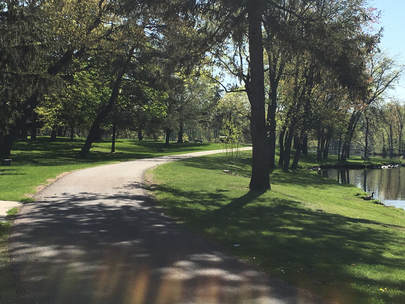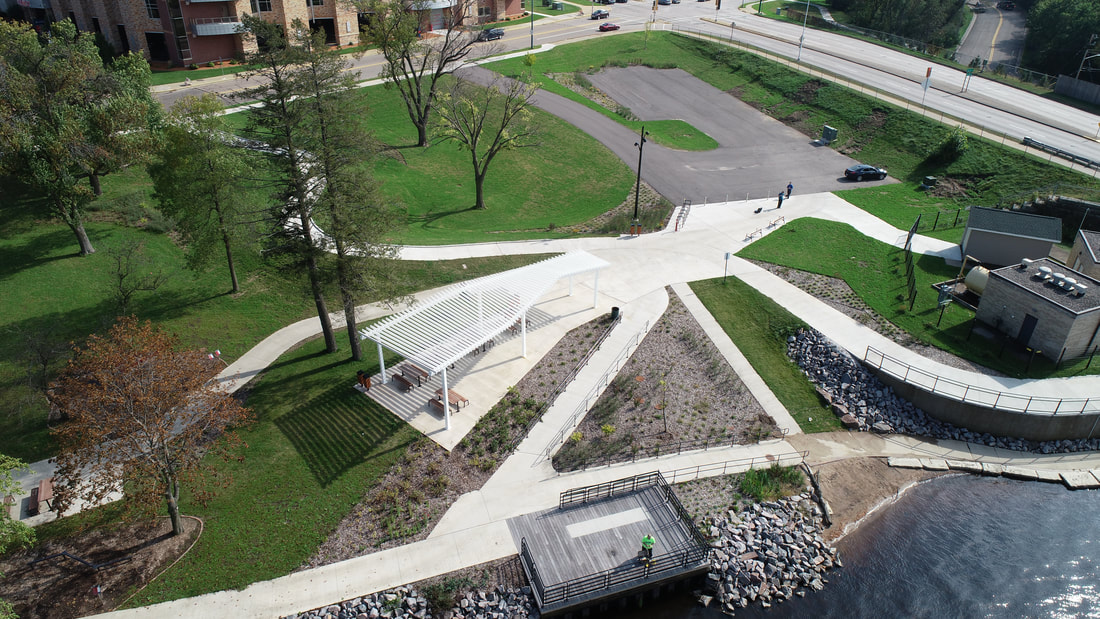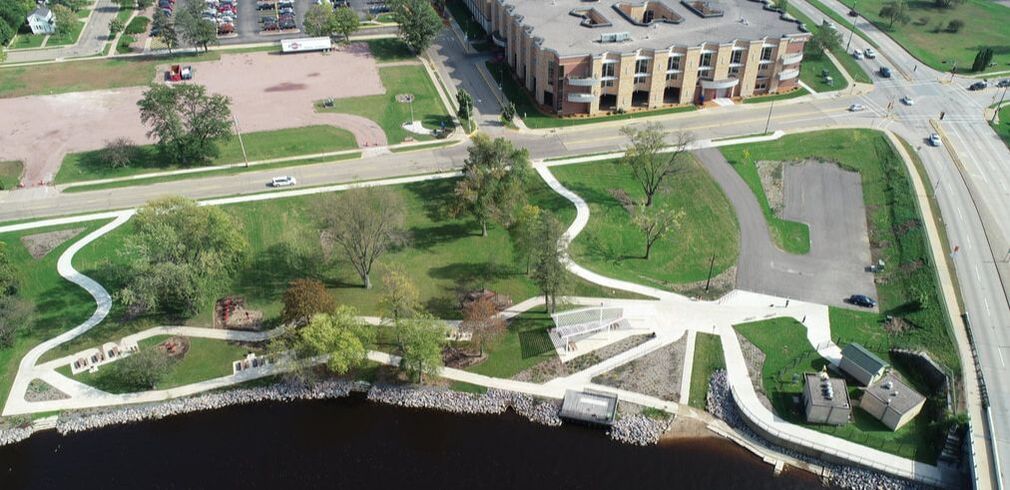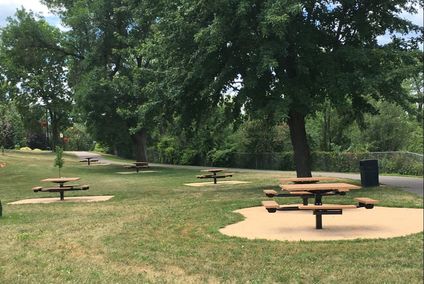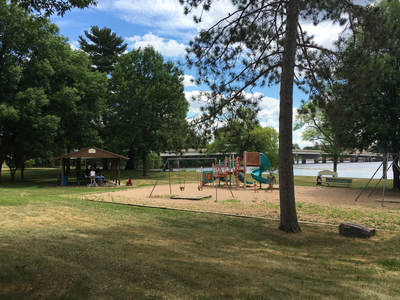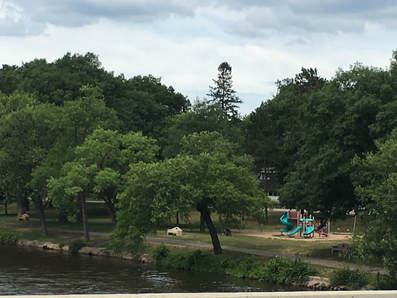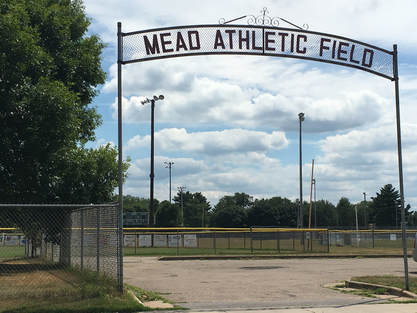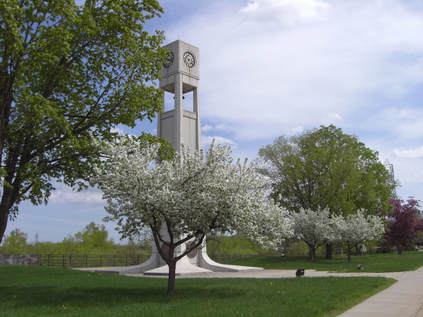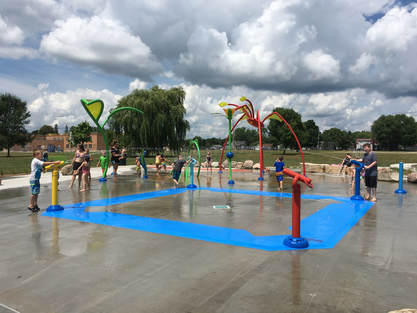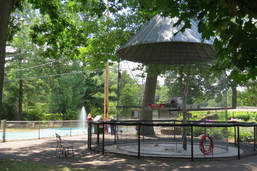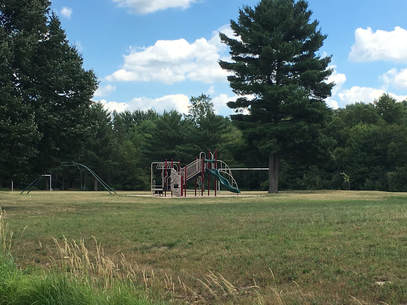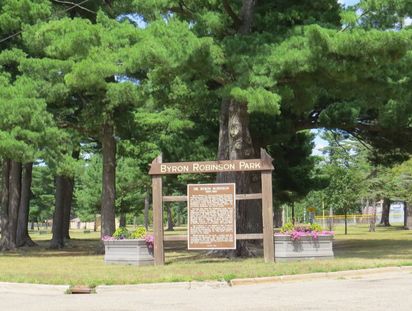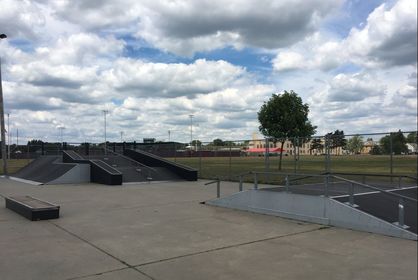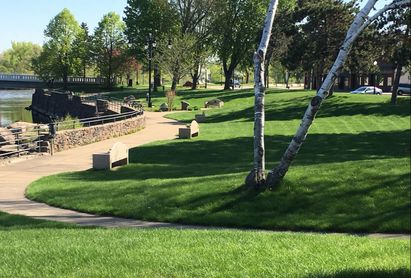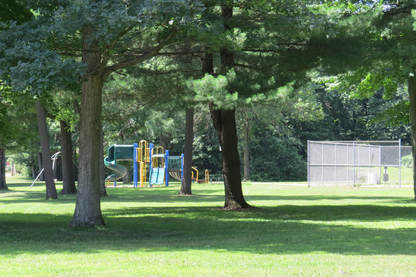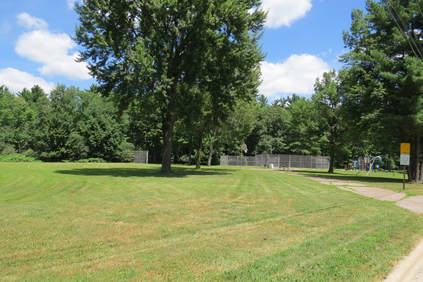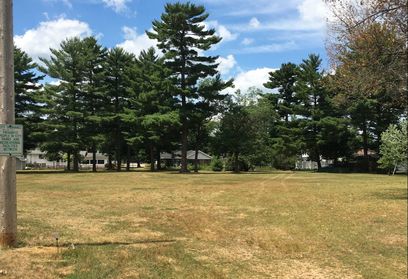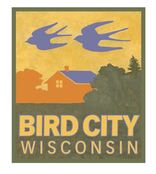CITY PARKS
Parks & Recreation > City Parks
Parks & Recreation > City Parks
Click HERE for a link to a map of our parks and HERE for our Ahdawagam Trail Map! And HERE for our parks brochure!
Our Comprehensive Outdoor Recreation Plan is HERE!
All City Parks restroom facilities are now OPEN for the season.
Our Comprehensive Outdoor Recreation Plan is HERE!
All City Parks restroom facilities are now OPEN for the season.
Ben Hansen Park
1900 Block of of 2nd Avenue South, 19.2 acres
Picnic areas with tables, shelters, play area, sand volleyball courts, restrooms, bike trail, adjacent to Firefighter's Memorial. Leashed dogs allowed on trail and in park (not in playground areas, volleyball courts, or Firefighter's Memorial)
Picnic areas with tables, shelters, play area, sand volleyball courts, restrooms, bike trail, adjacent to Firefighter's Memorial. Leashed dogs allowed on trail and in park (not in playground areas, volleyball courts, or Firefighter's Memorial)
Gaynor Park
Henry Demitz Park
Expressway & 3rd Street South, 4.4 acres
Accessible fishing pier, fitness stations, bike repair and kayak/canoe launch area.
Accessible fishing pier, fitness stations, bike repair and kayak/canoe launch area.
Legion Park
931 1st Street North, 4.2 acres
Walking path, picnic tables. Leashed dogs allowed on trail and within 10 feet of trail.
Walking path, picnic tables. Leashed dogs allowed on trail and within 10 feet of trail.
Lyon Park
2nd Avenue South & Expressway, 7.5 acres
Open shelter, restrooms, play equipment, outdoor grill, bike trail. Leashed dogs allowed on trail and in park, except for playground areas.
Open shelter, restrooms, play equipment, outdoor grill, bike trail. Leashed dogs allowed on trail and in park, except for playground areas.
Mead Athletic Field
17th Avenue & Chase Street, 17.7 acres
Splash pad, play equipment, tennis courts, pickleball courts, ball diamonds, restrooms (open during league games only). Splash pad restrooms open during splash pad hours.
Splash pad, play equipment, tennis courts, pickleball courts, ball diamonds, restrooms (open during league games only). Splash pad restrooms open during splash pad hours.
Mead Rapids View Park
Riverbank north of Jackson Street Bridge, 0.8 acres
Passive recreation area, site of the Clock Bell Tower, paved walking area. Leashed dogs allowed on trail and within 10 feet of trail
Passive recreation area, site of the Clock Bell Tower, paved walking area. Leashed dogs allowed on trail and within 10 feet of trail
Mead Splash Pad
Near corner of Alton Street and 14th Avenue
The Splash Pad is open Memorial Day through Labor Day, 10 a.m. to 8 p.m. or dusk, whichever is earlier; dates and hours may be shortened or extended without notice based upon weather.
The Splash Pad is open Memorial Day through Labor Day, 10 a.m. to 8 p.m. or dusk, whichever is earlier; dates and hours may be shortened or extended without notice based upon weather.
Municipal Zoo
1921 Gaynor Avenue, 14.4 acres
Zoo (free admission), petting zoo, Helen’s House (rentable enclosed shelter with counter space, plug-ins, sink and refrigerator), open shelter, outdoor grill, restrooms, play equipment. Open from Memorial Day through Labor Day.
Zoo (free admission), petting zoo, Helen’s House (rentable enclosed shelter with counter space, plug-ins, sink and refrigerator), open shelter, outdoor grill, restrooms, play equipment. Open from Memorial Day through Labor Day.
Poplar Springs Park
Springs & Poplar Street, 4.8 acres
Baseball backstop, play area, sledding hill. Leashed dogs allowed.
Baseball backstop, play area, sledding hill. Leashed dogs allowed.
Robinson Park
1150 17th Street North (17th & Apricot St), 25.5 acres
Rentable open shelter with picnic tables, band shell, restrooms, ball diamonds, play equipment, park pong, disc golf, volleyball net.
Rentable open shelter with picnic tables, band shell, restrooms, ball diamonds, play equipment, park pong, disc golf, volleyball net.
Sand Lot Park
453 Goodnow (Sampson & Goodnow St), 9.8 acres
Rentable open shelter with enclosed kitchen (counter space, plug-ins, sink and refrigerator), picnic tables, restrooms, play equipment, ball diamonds, volleyball courts, basketball court.
Rentable open shelter with enclosed kitchen (counter space, plug-ins, sink and refrigerator), picnic tables, restrooms, play equipment, ball diamonds, volleyball courts, basketball court.
Savaughn Park
Boles Circle
Wooded park area.
Wooded park area.
Skate Park
Corner of 8th Street South and Chestnut Street
Open 7 a.m. - 11 p.m. daily (April until it snows) Open to skateboarding, aggressive skating, BMX biking. Lighted facility. Helmet and safety gear strongly recommended.
Open 7 a.m. - 11 p.m. daily (April until it snows) Open to skateboarding, aggressive skating, BMX biking. Lighted facility. Helmet and safety gear strongly recommended.
Veteran's Memorial Park
2nd Street between Grand Ave/Jackson Street Bridge, 1.2 acres
Paved walking path, drinking fountain, American flag disposal box. Leashed dogs allowed on trail and within 10 feet of trail.
Paved walking path, drinking fountain, American flag disposal box. Leashed dogs allowed on trail and within 10 feet of trail.
Ward Johnson Park (North Park)
Witter Field
8th Street South & Apple Street, 26.1 acres
Home of the Rafters summer league baseball team, lighted tennis/pickleball courts, ice skating, warming house, and skate park.
Home of the Rafters summer league baseball team, lighted tennis/pickleball courts, ice skating, warming house, and skate park.
Woods Grove Park
East River Bank Conservancy Area
2nd Street South, between East Grand Avenue and Mead Street
Fishing, passive recreation. Leashed dogs allowed on trail and within 10 feet of trail.
Fishing, passive recreation. Leashed dogs allowed on trail and within 10 feet of trail.
West River Bank Conservancy Area
1st Avenue South, between West Grand Avenue & 2nd Avenue South
Fishing, walking path, dock and kayak launch. Leashed dogs allowed on trail and within 10 feet of trail.
Fishing, walking path, dock and kayak launch. Leashed dogs allowed on trail and within 10 feet of trail.
MEMORIAL BOULDER
Memorial evokes former Indian Agency
Wisconsin Rapids Daily Tribune
July 11, 2014
Then on the west river bank of Wisconsin Rapid the boulder was engraved with the names of seven soldiers who gave their lives in the Great War.
Dated 1919, it was dedicated July 4, 1923, by the Ah-dah-wa-gam chapter of the Daughters of the American Revolution, purposely in sight of the Indian Agency office in the MacKinnon block, to mark, "for generations to come, the Esteem and Friendship in which the Winnebagoes are held by the people of Wisconsin Rapids."
Of the men named, Corp. Foster Decorah, Robert Decorah, Mike Standingwater, Jesse Thompson and Dewey Mike have been profiled here. Added were James Greengrass, gassed in Europe but expiring at home, and Nelson de la Ronde, missing in action.
When President Coolidge sent a certificate in 1925 honoring 23 Winnebago war veterans, Agent Willis E. Dunn proudly hung a copy on the wall of the Indian Agency, just across West Grand Avenue from the memorial boulder.
Same with a service flag exhibited at the state fair in Milwaukee, presented by the Ah-dah-wa-gam chapter.
The local office dated from 1916, when the Department of Interior separated the Grand Rapids Wisconsin Winnebago agency from the Tomah Indian school, and named Samuel J. Stienstra, superintendent.
Stienstra's charge was to supervise expenditure of trust funds to 1,272 Winnebagos scattered over 15 counties in west central Wisconsin, northeastern Iowa and southeastern Minnesota and of 100 Kansas Potawatomi in Wood County near Arpin, presumably at Powers Bluff.
Employed here besides the superintendent were chief clerk H.J Key and assistant clerk Agnes B. McElligott.
Two men headquartered at Mauston and Black River Falls taught farming and submitted requests to buy land, buildings, horses and farm equipment.
"While Indians frequently visit the local office to secure funds and ask advice," said Stienstra, "the bulk of the work is cared for through correspondence. Upwards of ten thousand letters are received and answered through the local office annually, and funds are disbursed principally by mail."
A 1916 Janesville Gazette reported more than $60,000 paid out by Grand Rapids in three months to about 1,500 persons.
In 1917, after one year, the Rapids agency was removed to Laona to the protests of locals here, who noted that three times as many of those served lived in this vicinity — at Arpin, Tomah, Black River Falls, Neillsville, Wittenberg and Wausau.
After local merchant L.M. Nash and banker F. J. Wood traveled to Washington, D.C., to twist the arm of the Commissioner of Indian Affairs, the Rapids agency was reopened with Willis E. Dunn in charge.
Dunn was an active agent who; in 1919, appeared before the Monroe county board at Tomah asking that Indian lands be exempt from taxation; in 1920, assembled an exhibit of Native beadwork, basketwork and produce to be exhibited at the state fair; and provided the explosive TNT, left over from WWI, for the purpose of clearing land.
When Abner Nash, 89, who had settled in Monroe County just after the Civil War, lay dying in 1920 on the White farm west of Rapids, Dunn drove out to help.
Also in 1920, Dunn reported that 89 Indians had died in the worldwide influenza epidemic but, he said, the old belief that the Indians were going to be crowded into little settlements and pass out of existence as a race was not happening — although many picturesque customs were passing out of existence.
Dunn also saw no intermarriage here between Winnebagos and whites and noted that the "white plague" of tuberculosis was on the decline.
In 1921, Dunn, most lately of Sisseton, S.D., was the subject of a "Who's Who in Wisconsin Rapids" series in which he reported that the Rapids agency issued about 2,500 checks annually. He said he was assisted by deputy H.D. Key and secretary Isabel Schlig.
The agency, then in the Wood Block on the East Side, was discontinued in 1927 and its duties transferred to Tomah. The agent who had replaced Dunn 10 months earlier moved to Idaho.
When a new Rapids post office was planned in 1931, an unsuccessful effort was made to secure in the building a federal court room and the Indian agency.
From 1961 through 1966, local anthropologist, cranberry grower and politician Philleo Nash was appointed Commissioner of the United States Bureau of Indian Affairs during the Kennedy and Johnson administrations, in a time when American Indians were increasingly active in demanding recognition of sovereignty and civil rights.
Dave Engel is a local historian and author of books in the "River City Memoirs" series. His columns are featured monthly in Daily Tribune Media.
Wisconsin Rapids Daily Tribune
July 11, 2014
Then on the west river bank of Wisconsin Rapid the boulder was engraved with the names of seven soldiers who gave their lives in the Great War.
Dated 1919, it was dedicated July 4, 1923, by the Ah-dah-wa-gam chapter of the Daughters of the American Revolution, purposely in sight of the Indian Agency office in the MacKinnon block, to mark, "for generations to come, the Esteem and Friendship in which the Winnebagoes are held by the people of Wisconsin Rapids."
Of the men named, Corp. Foster Decorah, Robert Decorah, Mike Standingwater, Jesse Thompson and Dewey Mike have been profiled here. Added were James Greengrass, gassed in Europe but expiring at home, and Nelson de la Ronde, missing in action.
When President Coolidge sent a certificate in 1925 honoring 23 Winnebago war veterans, Agent Willis E. Dunn proudly hung a copy on the wall of the Indian Agency, just across West Grand Avenue from the memorial boulder.
Same with a service flag exhibited at the state fair in Milwaukee, presented by the Ah-dah-wa-gam chapter.
The local office dated from 1916, when the Department of Interior separated the Grand Rapids Wisconsin Winnebago agency from the Tomah Indian school, and named Samuel J. Stienstra, superintendent.
Stienstra's charge was to supervise expenditure of trust funds to 1,272 Winnebagos scattered over 15 counties in west central Wisconsin, northeastern Iowa and southeastern Minnesota and of 100 Kansas Potawatomi in Wood County near Arpin, presumably at Powers Bluff.
Employed here besides the superintendent were chief clerk H.J Key and assistant clerk Agnes B. McElligott.
Two men headquartered at Mauston and Black River Falls taught farming and submitted requests to buy land, buildings, horses and farm equipment.
"While Indians frequently visit the local office to secure funds and ask advice," said Stienstra, "the bulk of the work is cared for through correspondence. Upwards of ten thousand letters are received and answered through the local office annually, and funds are disbursed principally by mail."
A 1916 Janesville Gazette reported more than $60,000 paid out by Grand Rapids in three months to about 1,500 persons.
In 1917, after one year, the Rapids agency was removed to Laona to the protests of locals here, who noted that three times as many of those served lived in this vicinity — at Arpin, Tomah, Black River Falls, Neillsville, Wittenberg and Wausau.
After local merchant L.M. Nash and banker F. J. Wood traveled to Washington, D.C., to twist the arm of the Commissioner of Indian Affairs, the Rapids agency was reopened with Willis E. Dunn in charge.
Dunn was an active agent who; in 1919, appeared before the Monroe county board at Tomah asking that Indian lands be exempt from taxation; in 1920, assembled an exhibit of Native beadwork, basketwork and produce to be exhibited at the state fair; and provided the explosive TNT, left over from WWI, for the purpose of clearing land.
When Abner Nash, 89, who had settled in Monroe County just after the Civil War, lay dying in 1920 on the White farm west of Rapids, Dunn drove out to help.
Also in 1920, Dunn reported that 89 Indians had died in the worldwide influenza epidemic but, he said, the old belief that the Indians were going to be crowded into little settlements and pass out of existence as a race was not happening — although many picturesque customs were passing out of existence.
Dunn also saw no intermarriage here between Winnebagos and whites and noted that the "white plague" of tuberculosis was on the decline.
In 1921, Dunn, most lately of Sisseton, S.D., was the subject of a "Who's Who in Wisconsin Rapids" series in which he reported that the Rapids agency issued about 2,500 checks annually. He said he was assisted by deputy H.D. Key and secretary Isabel Schlig.
The agency, then in the Wood Block on the East Side, was discontinued in 1927 and its duties transferred to Tomah. The agent who had replaced Dunn 10 months earlier moved to Idaho.
When a new Rapids post office was planned in 1931, an unsuccessful effort was made to secure in the building a federal court room and the Indian agency.
From 1961 through 1966, local anthropologist, cranberry grower and politician Philleo Nash was appointed Commissioner of the United States Bureau of Indian Affairs during the Kennedy and Johnson administrations, in a time when American Indians were increasingly active in demanding recognition of sovereignty and civil rights.
Dave Engel is a local historian and author of books in the "River City Memoirs" series. His columns are featured monthly in Daily Tribune Media.
Witter Park Aquatics Center
681 Chestnut St.
Aquatics Center, skate park, new playground equipment, a splash pad with night illumination, an outdoor shelter, one tennis court, six pickleball courts, restrooms and concessions. Ice skating circle and warming house, weather permitting.
Aquatics Center, skate park, new playground equipment, a splash pad with night illumination, an outdoor shelter, one tennis court, six pickleball courts, restrooms and concessions. Ice skating circle and warming house, weather permitting.

